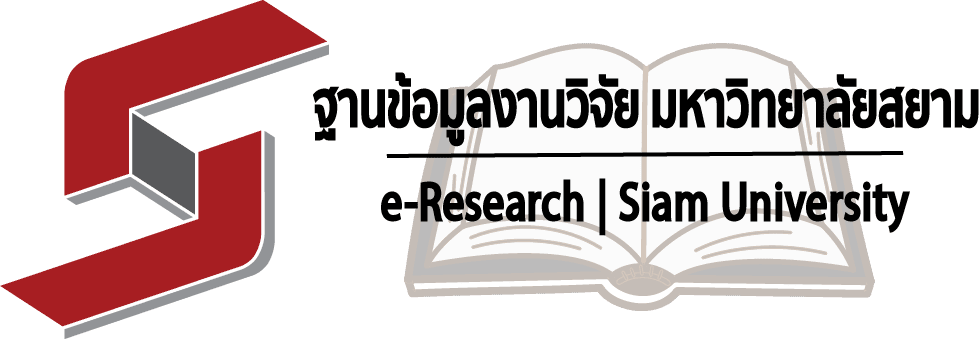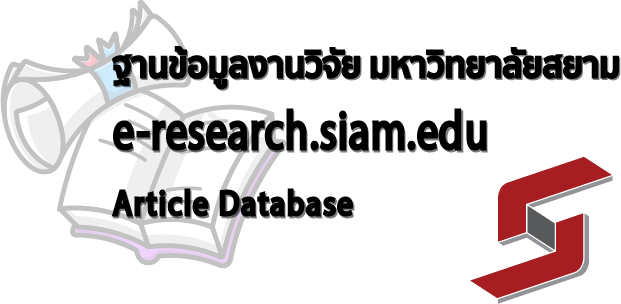- KB Home
- หลักสูตรระดับบัณฑิตศึกษา|Graduate Schools
- หลักสูตรปริญญาเอก|Doctoral Degree
- Ph.D. in Management
- Organizational Well-Being Model and Work-Life Integration: A Study of Female Faculties and Staff in Women’s Colleges and Universities in China
| Title: | Organizational Well-Being Model and Work-Life Integration: A Study of Female Faculties and Staff in Women’s Colleges and Universities in Chinaa |
| Author: | Wang Peng |
| Advisor: | รศ. ดร.ไชยนันท์ ปัญญาศิริ – Assoc. Prof. Dr. Chaiyanant Panyasiri, ผศ. ดร.มณีกัญญา นากามัทสึ – Asst. Prof. Dr. Maneekanya Nagamatsu |
| Degree: | ปรัชญาดุษฎีบัณฑิต สาขาวิชาการจัดการ – Doctor of Philosophy Program in Management |
| Major: | ปร.ด. การจัดการ – Ph.D. in Management |
| Faculty: | บัณฑิตวิทยาลัย (Graduate School) |
| Academic year: | 2568 (2025) |
| Published: | ตีพิมพ์ในวารสาร (Journal Name) Journal of Educational Innovation and Research Vol.9 No.4 Oct-Dec 2025 Click |
Abstract
This research investigates the connection between Organizational Well-Being (OWB) and Work-Life Integration (WLI) among female faculty and staff at women’s colleges and universities in China. The primary objectives are to determine the critical factors of OWB, assess their influence on WLI, and develop a framework to enhance work-life integration for faculty members. The study adopted a mixed-methods approach and employed structural equation modeling (SEM), in-depth interviews, and focus group discussions. A total of 400 valid survey responses were collected and analyzed using SPSS and AMOS, with reliability assessed through Cronbach’s Alpha, Composite Reliability (CR), and Average Variance Extracted (AVE). The findings reveal that OWB significantly impacts WLI through job satisfaction (JS) and employee engagement (EE), with EE recognized as the most significant predictor (β = 0.412). The equation supports the relationship: WLI = 0.358·OWB + 0.334·JS + 0.412·EE + ε.
Qualitative findings highlight faculty concerns regarding workload imbalance, flexibility in work and time, and both physical and mental support, while underscoring the significance of leadership, autonomy, and recognition. Over 60% of respondents recognize the role of technology in alleviating work-life conflicts through digital tools and flexible work arrangements.
The study proposes five strategies for improving work-life integration (WLI): flexible work policies, digital solutions, leadership development, mental health support, and employee engagement initiatives. These findings provide policy insights for higher education institutions aiming to enhance female faculty and staff engagement and work-life integration. Further research on the role of technology in fostering WLI is recommended.
Keywords: organizational well-being, work-life integration, job satisfaction, employee engagement, structural equation modeling
6419200016 Wang Peng 2568 (2025) Advisor: รศ. ดร.ไชยนันท์ ปัญญาศิริ – Assoc. Prof. Dr. Chaiyanant Panyasiri, ดุษฎีนิพนธ์ (Dissertation), Organizational Well-Being Model and Work-Life Integration: A Study of Female Faculty and Staff in Women’s Colleges and Universities in China, ตีพิมพ์ในวารสาร (Journal Name), Journal of Educational Innovation and Research, ปริญญาเอก (Doctorate Degree), บัณฑิตวิทยาลัย (Graduate School), ปรัชญาดุษฎีบัณฑิต สาขาวิชาการจัดการ – Doctor of Philosophy Program in Management, ปร.ด. การจัดการ – Ph.D. in Management, Siam University, Bangkok, Thailand – มหาวิทยาลัยสยาม กรุงเทพมหานคร ประเทศไทย


